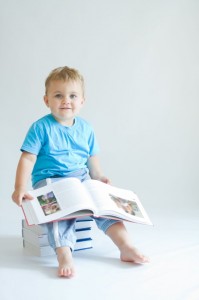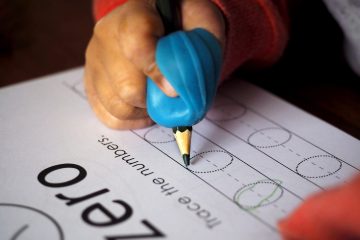 When was the last time you went to a baby shower and saw children’s books on the gift registry? No, I haven’t seen that either, but it’s not a bad idea. In fact it could end up being one of the most valuable gifts for that new baby’s first years of life.
When was the last time you went to a baby shower and saw children’s books on the gift registry? No, I haven’t seen that either, but it’s not a bad idea. In fact it could end up being one of the most valuable gifts for that new baby’s first years of life.
According to the latest research, early exposure to books can be an important component of a child’s development, and will provide a solid foundation for the expansion of reading skills. Even infants can benefit from being read to, as they gain valuable practice with the many aspects of language and reading, including:
Language Sounds- Research indicates that infants will hear all the sounds of their language by the time they reach the age of one, which leads to their ability to speak and, later on, read. When you read to your child, your child will have the opportunity to hear new sounds and perhaps repeat them after you.
Vocabulary- Similarly, reading to your child offers your child the opportunity to hear new vocabulary and connect words with pictures.
Practice with Basic Educational Concepts- Books can help to provide an essential introduction to shapes, colors, letters, and numbers.
In my previous post, Early Reading Milestones, I discussed how parents can support a young child’s development by verbally interacting with their child, repeating words, and encouraging their child to make sounds and eventually say whole words. It is natural for babies to explore books by reaching for and turning pages, looking at the pictures, and listening as you read a story. The National Education Association also has some great tips for reading to infants and toddlers.
Here are a few examples of types of beginner books that can be particularly beneficial for young children:
- Alphabet Books: Reading alphabet books to children helps introduce them to alphabetical knowledge and letter recognition. Being able to identify letters within text is an essential step in the reading process.
- Basic “Word and Picture” Books: For the youngest children, books that have one word per page, along with a colorful illustration, can support vocabulary acquisition. Children can also begin to visually associate a picture with a written word, so that eventually reading the word will be recognized automatically.
- Rhyming Books: Books that include rhymes can be helpful in building children’s early understanding of sounds in relation to letters.
- Word Family Books: As with rhyming books, books that focus on specific “word families” (for example, -at words such as “mat,” “cat,” “sat”) give children important practice with hearing letter sounds.
- Phonics Readers: Books that focus on a particular letter-sound can also support a children’s familiarity with sounds.
- Easy Readers: Books that contain simple language and/or repetition can give children extra practice with vocabulary and support their eventual independent reading skills.
And don’t forget the picture books! Read books with amusing pictures and funny storylines, and don’t worry about having to read an entire story if time is running short. Make it a priority to share books with your little one every day. It’s also good practice to read favorite stories repeatedly, so your child can hear the rhythm of the story just as he would a song. In the next post of this series I’ll give you ideas for establishing reading routines at home.
Oprah has compiled a reading list to help babies ages 0-2 discover the joy of reading. Here are a few of our family favorites not on Oprah’s list:
Papa, Please Get the Moon for Me by Eric Carle
Brown Bear, Brown Bear, What do You See? by Bill Martin, Jr.
I Don’t Want to Go to Bed! by Julie Sykes
The Little Mouse, the Red Ripe Strawberry, and the Big Hungry Bear
by Don & Audrey Wood
Where the Wild things Are by Maurice Sendak
Guess How Much I Love You by Sam McBratney
Where’s My Teddy? by Jez Alborough
No, David! by David Shannon
What are your favorite books for small children?


